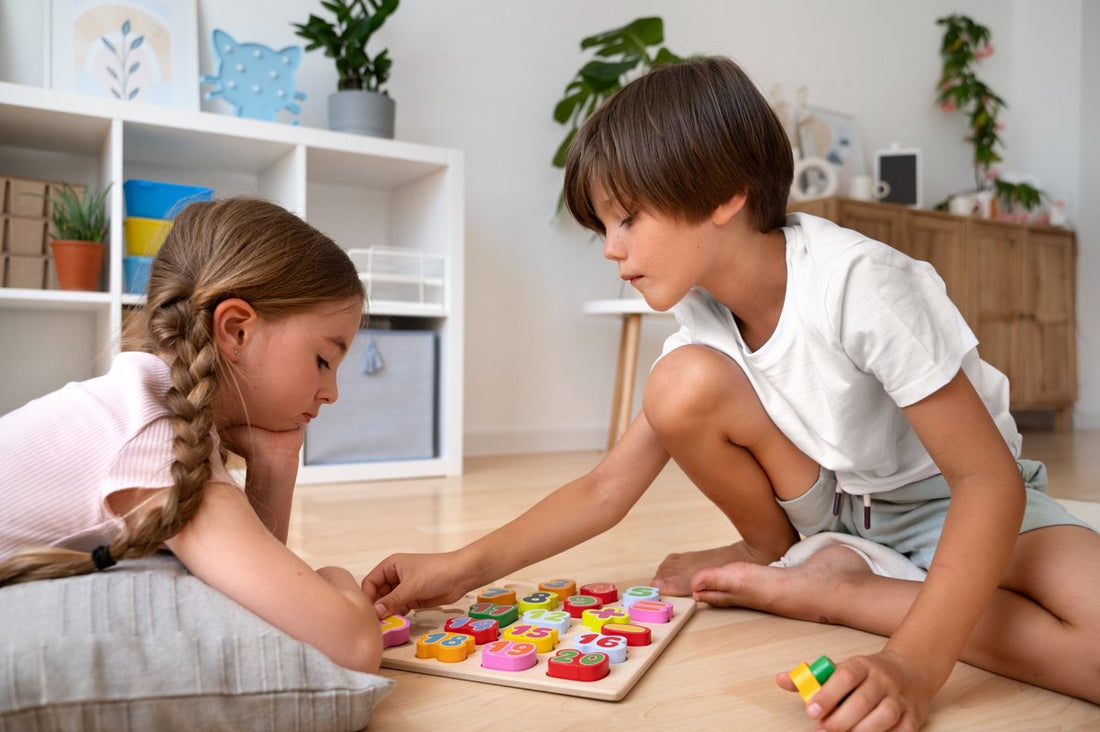
Why Educational Wooden Toys Still Matter in a Digital World
Share
In the age of tablets, apps, and flashy electronics, it’s easy to forget the quiet power of something as simple as a wooden toy. But more and more parents today are rediscovering the beauty of educational wooden toys — not just for their charm, but for the lasting developmental value they bring.
There’s something deeply grounding about the weight, texture, and warmth of wood in a child’s hand. Unlike plastic toys with lights, sounds, and batteries that direct the play, wooden toys ask the child to lead. They spark imagination, encourage patience, and invite hands-on learning — all without a screen in sight.
These toys don’t overwhelm. They don’t beep or flash. And yet, they do something much more powerful: they help children think.
A Different Kind of Play
Wooden toys slow things down. They give children the space to explore at their own pace — stacking, arranging, solving, painting, and building. These moments of focused play are where real learning happens. Without instructions or digital stimulation, kids begin to experiment. They develop problem-solving abilities not by being told what to do, but by figuring it out on their own.
Educational wooden toys are not about instant gratification. They’re about process. They’re about trying, failing, and trying again. And in a world that often moves too fast, this kind of slow, intentional play is incredibly valuable.
Learning Without Realizing It
The best part about educational toys is that kids don’t realize they’re learning — they’re just playing. But with every puzzle piece they move, every letter they recognize, every shape they sort, something clicks. They're developing memory, coordination, vocabulary, and logic — all while having fun.
Wooden toys support this kind of “disguised learning.” There’s no pressure. No scores. No bright “game over” screens. Just pure, thoughtful engagement.
Designed for the Senses
Children are sensory learners, especially in their early years. The texture of wood, its natural weight, even its scent — all of these make wooden toys more than just tools for play. They become sensory experiences. Unlike plastic, which often feels hollow and cold, wood has a presence. It’s real. It connects children to nature in subtle, important ways.
A Greener, Gentler Choice
More than ever, parents are thinking about what kind of world their children will inherit. Choosing educational wooden toys is also a choice for sustainability. These toys are made from renewable materials, often biodegradable, and built to last — not just for one child, but for siblings and future generations.
And there’s something beautiful in that: giving your child a toy that doesn’t just teach, but also respects the world they’re growing up in.
Childhood the Way It Should Be
Educational wooden toys represent more than just playthings. They reflect a philosophy: that children deserve toys that nurture their minds, engage their hands, and encourage real learning — without overcomplicating things.
In many ways, these toys bring us back to what childhood should feel like: simple, natural, creative, and full of discovery.
So while the world keeps rushing forward with digital everything, wooden toys continue to stand still — quietly, thoughtfully, doing what they’ve always done best: helping little minds grow, one piece at a time.